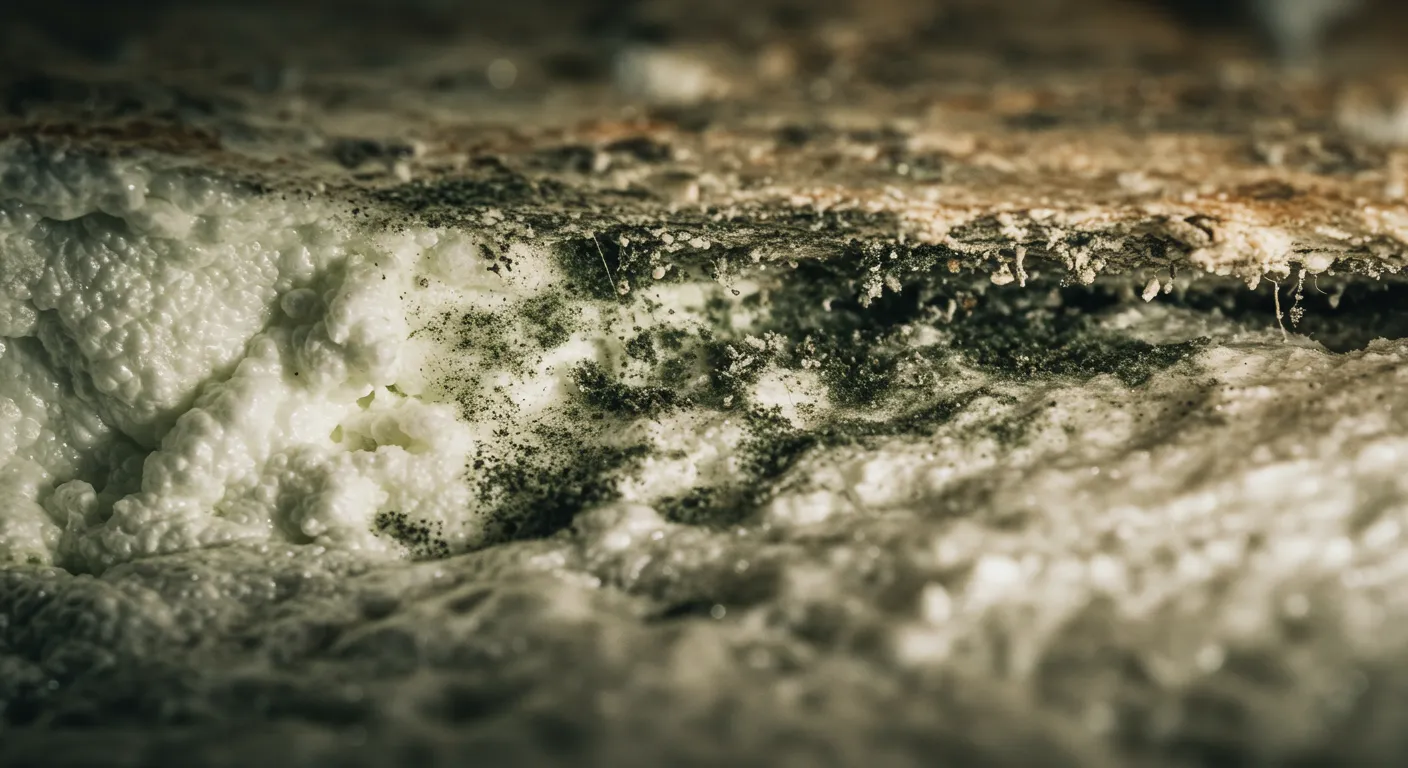Spray foam insulation is a popular choice for residential and commercial buildings due to its energy efficiency and airtight sealing properties. However, one common concern is whether mold can grow behind spray foam insulation. Understanding the relationship between spray foam and mold is essential for homeowners and builders alike. This article explores the causes, risks, and preventative measures associated with mold growth behind spray foam insulation, particularly in regions like Plano, TX, where humidity and weather conditions can influence mold development.
Understanding Spray Foam Insulation
What Is Spray Foam Insulation?
Spray foam insulation is a chemical product created by combining isocyanate and polyol resin. When these components mix, they expand and harden, forming an insulating layer. Spray foam comes in two types:
- Open-cell spray foam: Lighter and more flexible, allowing some air and moisture permeability.
- Closed-cell spray foam: Denser and more rigid, forming a complete moisture barrier.
How Spray Foam Prevents Mold Growth
Spray foam insulation creates an airtight seal, reducing moisture infiltration, which is a key factor in mold growth. Unlike fiberglass or cellulose insulation, which can absorb water, closed-cell spray foam does not retain moisture, making it less conducive to mold formation.
Factors That Contribute to Mold Growth Behind Spray Foam
Poor Installation Practices
Improper spray foam application can leave gaps or pockets where moisture can accumulate. Inadequate coverage or poor adhesion can also result in hidden moisture issues.
Pre-existing Moisture in Walls
If spray foam insulation is applied to damp surfaces, moisture can become trapped, leading to mold growth over time. Proper pre-installation moisture assessment is crucial.
Leaks in the Building Envelope
Water leaks from the roof, plumbing, or exterior walls can introduce moisture behind the spray foam, creating an environment conducive to mold development.
High Humidity Levels
Regions with high humidity, such as Plano, TX, can experience increased moisture penetration in poorly ventilated spaces, further raising the risk of mold growth.
Common Signs of Mold Growth Behind Spray Foam
Musty Odors
A persistent, musty smell may indicate hidden mold growth behind walls or insulation.
Discoloration on Walls or Ceilings
Visible stains or dark patches on drywall or ceilings could suggest moisture buildup behind the insulation.
Increased Allergy Symptoms
Mold spores can trigger allergies, asthma, and respiratory issues. Unexplained health symptoms may indicate a hidden mold problem.
Warped or Damaged Drywall
Moisture behind insulation can cause drywall to warp, crack, or deteriorate over time.
Preventing Mold Growth Behind Spray Foam Insulation
Ensure Proper Installation
Hiring professional installers ensures even and complete coverage, reducing the risk of air pockets or moisture retention.
Conduct Pre-Installation Moisture Checks
Before applying spray foam, ensure that surfaces are dry and free of moisture infiltration.
Maintain Adequate Ventilation
Proper ventilation in attics, crawl spaces, and wall cavities helps regulate moisture levels and prevents mold growth.
Address Leaks and Water Intrusion
Regular inspections and prompt repair of leaks in plumbing, roofing, and exterior walls help prevent moisture buildup.
Can Spray Foam Insulation Cause Mold?
Spray foam itself does not support mold growth because it is not an organic material. However, moisture trapped behind the foam due to improper installation or external leaks can create favorable conditions for mold.
Mold Remediation and Removal Strategies
Identifying the Extent of Mold Growth
A professional mold inspection can determine the severity of mold infestation behind spray foam insulation.
Removing Contaminated Materials
In severe cases, sections of insulation may need removal to eliminate mold colonies.
Applying Mold Inhibitors
Using mold-resistant coatings and treatments can help prevent regrowth after remediation.
Improving Moisture Control
Long-term mold prevention involves addressing humidity levels, leaks, and insulation effectiveness.
Pros and Cons of Spray Foam Insulation in Mold Prevention
| Aspect | Pros | Cons |
| Moisture Resistance | Prevents moisture infiltration | Can trap existing moisture if improperly installed |
| Energy Efficiency | Reduces air leaks and energy loss | May require professional installation for effectiveness |
| Durability | Long lifespan and minimal maintenance | Higher initial cost compared to traditional insulation |
| Mold Prevention | Does not support mold growth | Requires proper moisture management to be effective |
Conclusion
Spray foam insulation is an effective solution for energy efficiency and moisture control, but improper installation or hidden leaks can create conditions for mold growth behind the insulation. Ensuring proper moisture management, professional installation, and routine inspections can mitigate these risks. For expert spray foam insulation services in Plano, TX, Excel Spray Foam – Plano provides professional solutions tailored to your needs.
Contact Us
If you suspect mold growth behind your spray foam insulation or need professional insulation installation, Contact us today to ensure a safe and energy-efficient home.
Frequently Asked Questions
Can mold grow on spray foam insulation?
No, spray foam insulation itself does not support mold growth because it lacks organic materials. However, mold can grow on surfaces behind or adjacent to improperly installed spray foam.
How can moisture get trapped behind spray foam insulation?
Moisture can become trapped due to pre-existing dampness in walls, leaks in the building envelope, or improper installation that creates air pockets.
What should be done if mold is found behind spray foam insulation?
Professional mold remediation is recommended. This may involve removing affected insulation, treating mold-infested areas, and improving moisture control.
Is closed-cell or open-cell spray foam better for mold prevention?
Closed-cell spray foam is superior for mold prevention because it acts as a vapor barrier, preventing moisture infiltration.
Can mold behind spray foam insulation affect indoor air quality?
Yes, mold spores can enter indoor air, leading to allergies, respiratory issues, and other health problems.
How can homeowners prevent mold when using spray foam insulation?
Ensuring proper installation, conducting pre-installation moisture checks, maintaining ventilation, and addressing leaks can prevent mold issues.
Is professional installation necessary for preventing mold behind spray foam?
Yes, professional installation ensures correct application, minimizing risks associated with moisture retention and mold growth.
Does the climate in Plano, TX, increase the risk of mold behind spray foam insulation?
Yes, Plano’s humid climate can contribute to mold growth if moisture control measures are not in place.
How long does spray foam insulation last without mold issues?
With proper installation and maintenance, spray foam insulation can last several decades without mold concerns.
Can mold behind spray foam insulation be removed without removing the insulation?
In some cases, surface treatments and dehumidification can help, but extensive mold growth often requires removing affected insulation.



